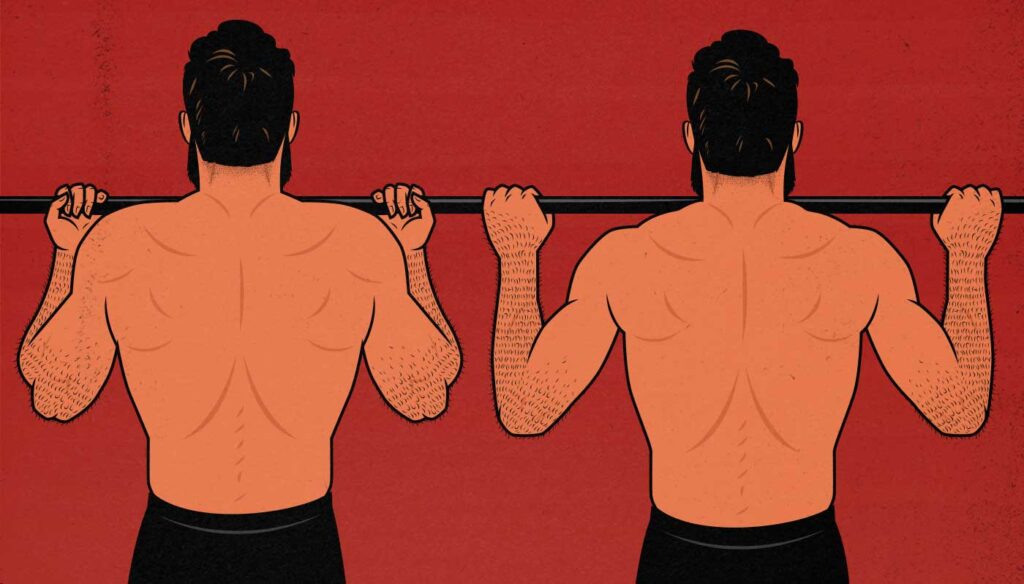
What’s The Difference Between Chin-Ups & Pull-Ups? Which is Better?
Chin-ups are done by hanging from a bar with an underhand grip and pulling yourself up. Pull-ups are quite similar. You hang from a bar with an overhand grip and pull yourself up. In fact, they’re so similar that they’re often used interchangeably. But that small change in grip position has quite a big effect on which muscles you work, how large your range of motion is, and how heavy you can lift.
So let’s talk about the pros and cons of pull-ups vs chin-ups and how best to use them in your workout routine.
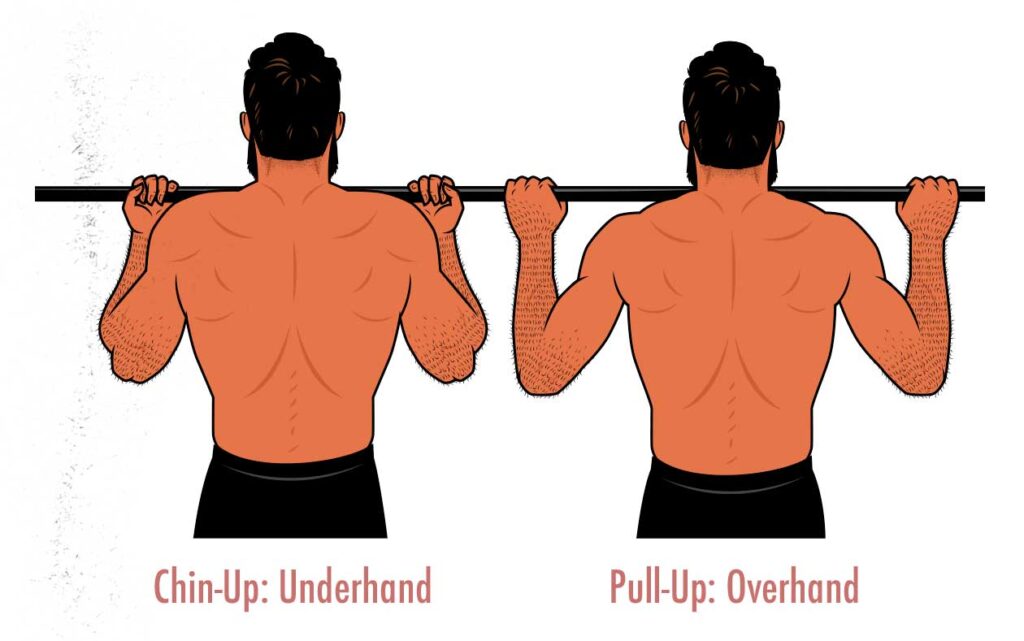
What’s the Difference Between Chin-Ups Vs Pull-Ups?
Chin-ups are done with a narrower, underhand grip, whereas pull-ups are done with a wider, overhand grip. This may seem like a small difference, but switching from an underhand grip to an overhand grip changes how heavy you can lift and which muscles get worked.
What Muscles Do Chin-Ups & Pull-Ups Work?
Both chin-ups and pull-ups are great exercises for building a bigger upper back. However, switching the angle of our grip changes how much our arms are worked, and changing our grip width affects the range of motion.
- With an overhand grip, your biceps lose their leverage, and so they aren’t worked hard enough to stimulate muscle growth. And because your biceps aren’t contributing to the lift, you cannot lift as much weight or get as many reps.
- With a wider grip, the range of motion is reduced, and so there’s less total work being done. This is compounded by the fact that fewer muscles are being worked and less weight being lifted.
Now, how much does it matter? If we look at the EMG research of Bret Contreras, PhD, we see a few differences in muscle activation between bodyweight chin-ups and pull-ups:
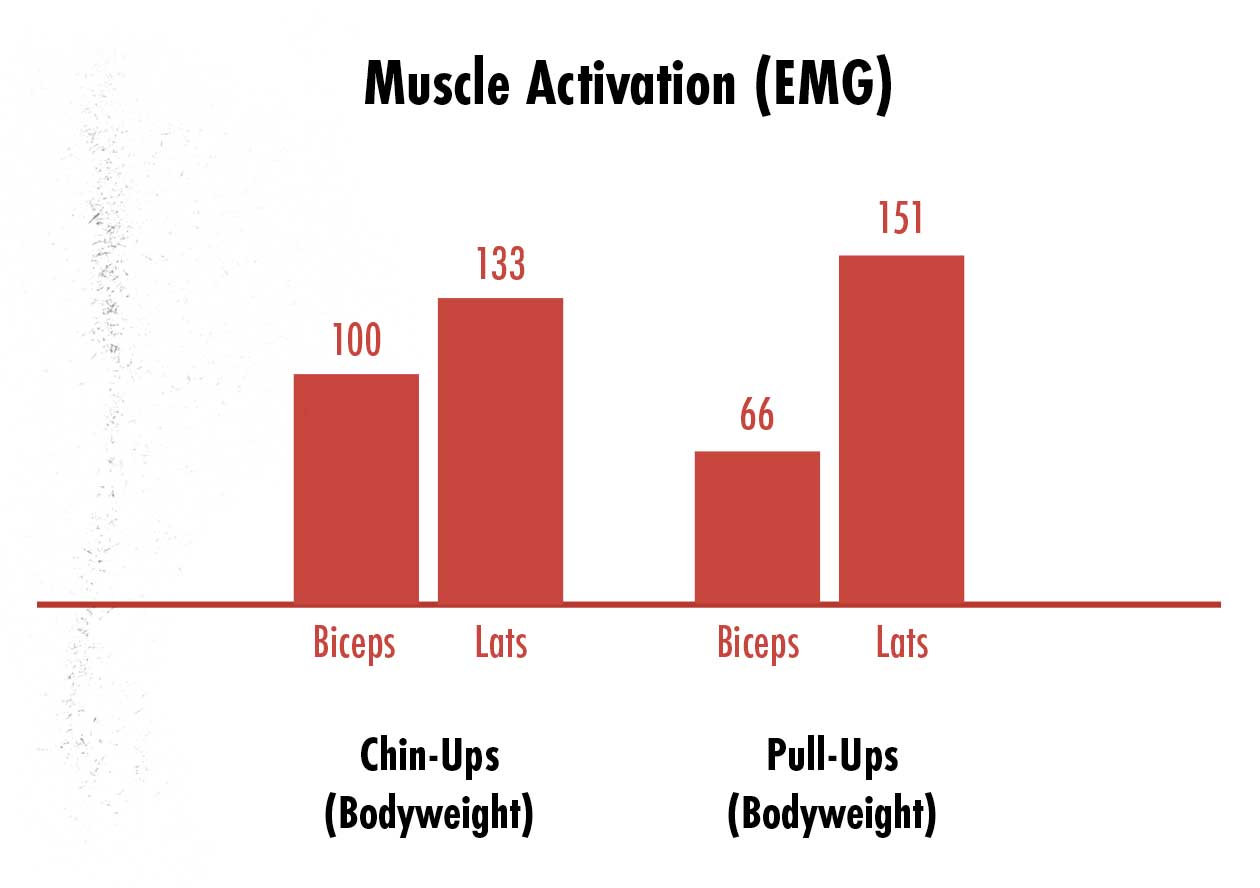
So what we’re seeing is that chin-ups work our biceps 52% harder and pull-ups work our lats 14% harder… right? Yes, but only if we’re talking about doing a single bodyweight repetition of either exercise. The thing is, that’s now how we train for muscle growth. If we’re doing bodyweight chin-ups and pull-ups, we need to bring our sets close to failure, and since we’re stronger at chin-ups, we can do more repetitions. And if we’re adding weight, we can add more weight to our chin-ups.
So what’s happening with these bodyweight exercises is that with chin-ups, the load is shared more evenly between our lats and biceps. And because our biceps are helping, the lift becomes easier, and less load is put on our lats. When we do more repetitions or add more weight, though, then because both of these muscles are sharing the load more evenly, we bring both of them closer to failure, stimulating more overall muscle growth.
For example, in Dr Contreras’s case, he was able to do chin-ups with 90 pounds around his waist, pull-ups with 45 pounds. At that point, because of the heavier weights being used, both exercises worked his lats equally hard. After all, his lats were the limiting factor in both of them, meaning that they’ll get most of the growth stimulus regardless. What’s interesting, though, is that the chin-up went from working the biceps 53% harder to working them 60% harder.
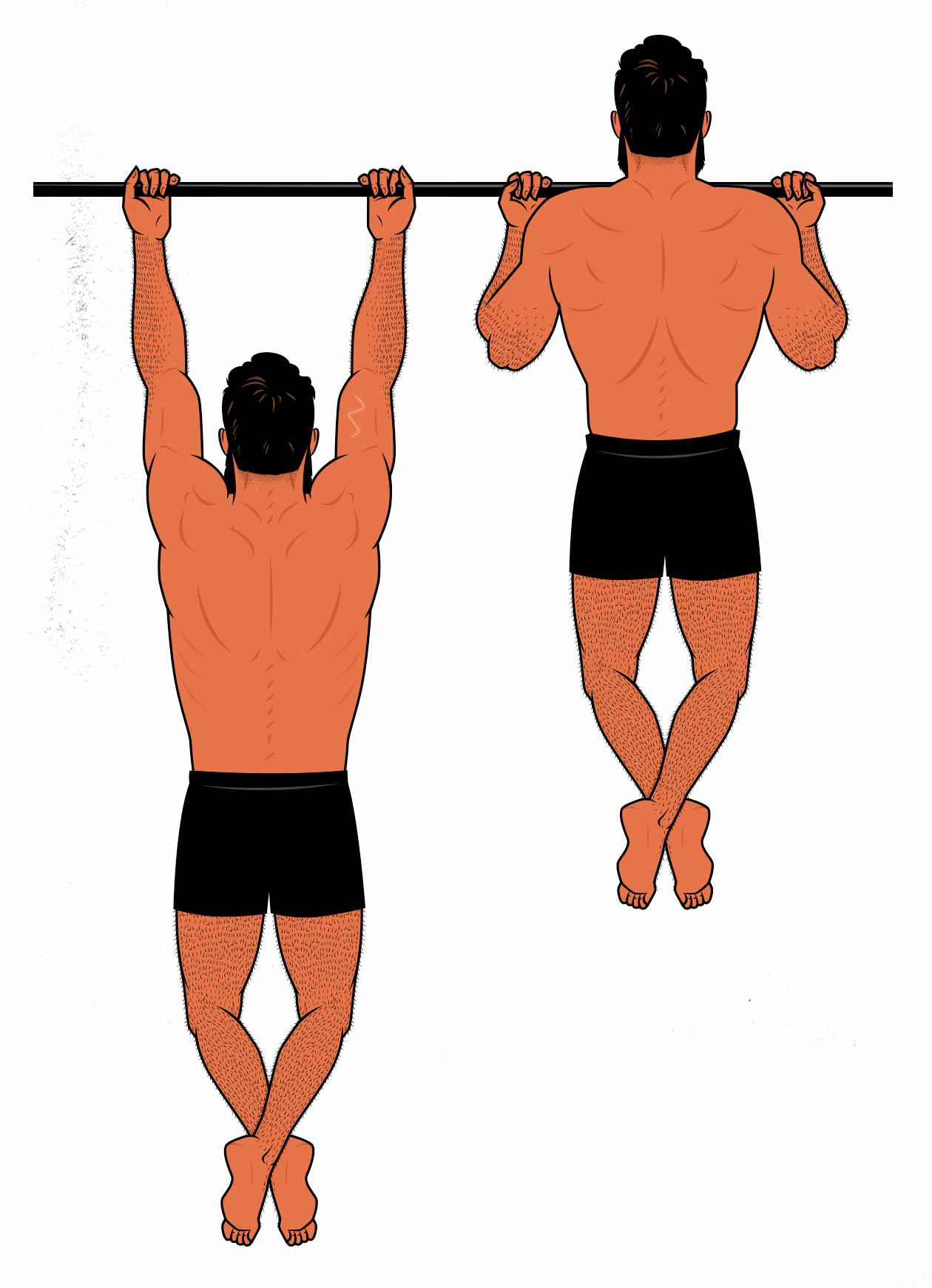
Then, if we look at a study published in the Journal of Strength and Conditioning Research, we see that the chin-up uses an extra 8° of range of motion in the elbows when compared against the pull-up, making them even better for bulking up our biceps.
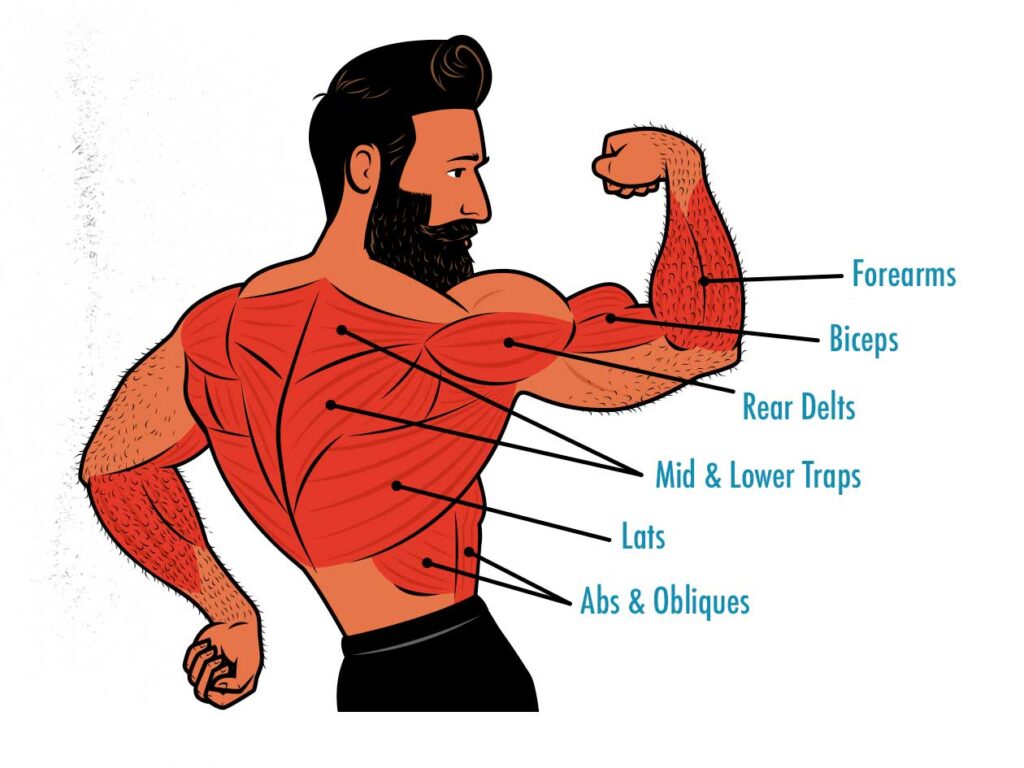
So the chin-up is a big compound lift that trains our upper backs, biceps, and abs under a heavy load and through a large range of motion. It works our muscles and cardiovascular systems quite a bit harder than the pull-up, and it stimulates far more overall muscle growth. As a result, it’s often used as one of the main muscle-building lifts in hypertrophy training programs.
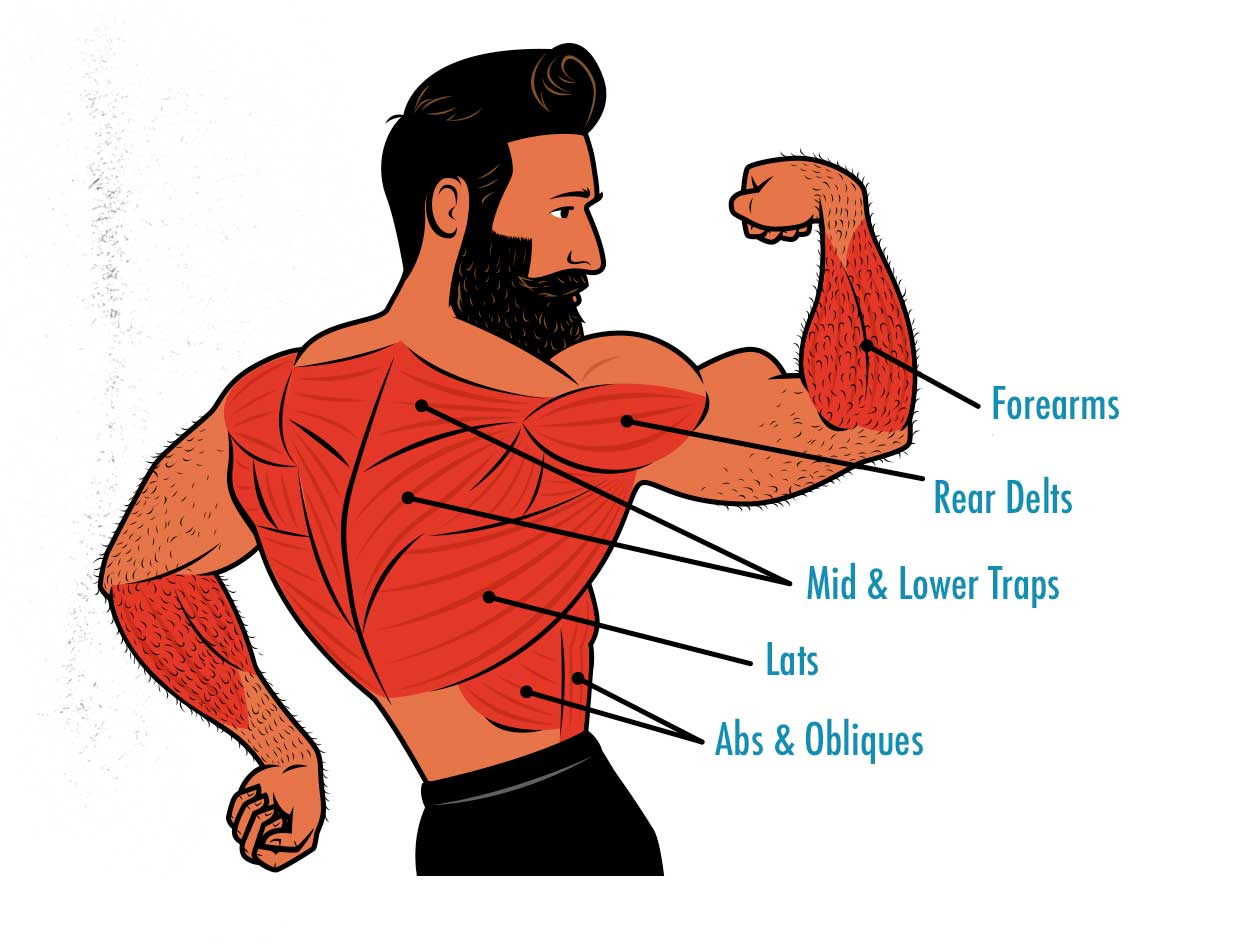
The pull-up is a smaller compound lift that trains our upper backs through a shorter range of motion. It’s still quite similar to the chin-up, it’s just that our biceps are taken out of the picture, and our biceps are quite strong. Because less overall muscle mass is being worked, they’re quite a bit less tiring. As a result, pull-ups are often used as an assistance exercise to emphasize the upper back, especially the lats.
Are There Any Advantages to Pull-Ups?
Chin-ups are the bigger compound lift, but we aren’t always trying to do the biggest compound lifts. Maybe you’re tired, you’ve already beaten up your biceps, and you want a lift that works your lats proportionally harder. That’s where pull-ups come in. They aren’t as heavy, aren’t as tiring, and they do a great job of bringing your lats close to failure.
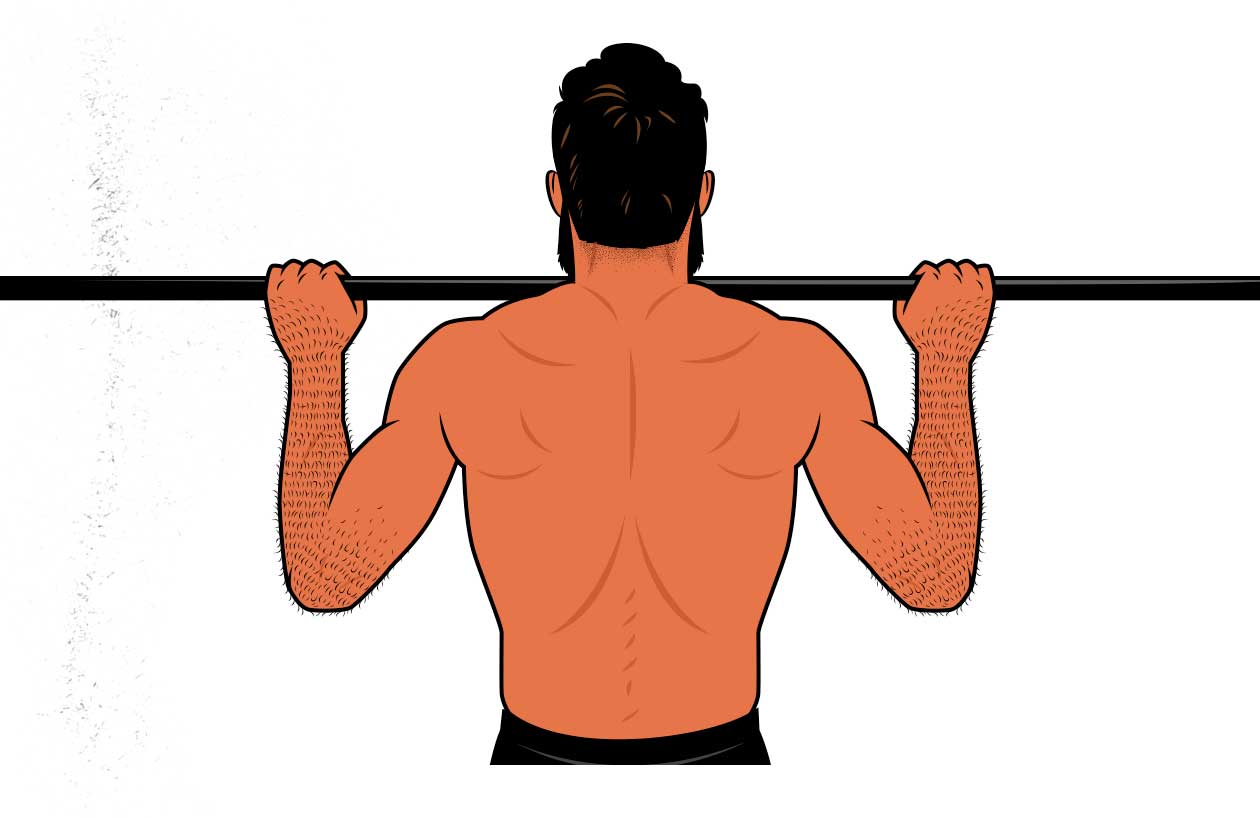
Plus, if your lats are stubborn and lagging behind, pull-ups are a good lift for emphasizing them with less risk of other muscles taking over. They’re also a good way to introduce variety into your workout program. There’s no reason to only do chin-ups. Better to do both.
What About Angled Pull-Up Bars?
Standard chin-ups and pull-ups are done on a straight bar, but that’s often uncomfortable, and many people find that it hurts their elbows. To solve that problem, it’s common to use angled bars or gymnastics rings, allowing you to grip the bar more comfortably. And that’s perfectly fine. That’s a natural position for your biceps to pull from. You can still lift just as much weight. It’s just a more comfortable way of doing chin-ups.
So, Which is Better?
If you had to do just one, chin-ups are a better muscle-building exercise than pull-ups. They’re easier to do, can be loaded heavier, and build more muscle. But both chin-ups and pull-ups are great exercises. Comparing the two is kind of like comparing a chin-up against a biceps curl. Both have their place in a good workout routine. Use chin-ups as your main variation, pull-ups as a lighter assistance lift.

If you want a customizable workout program (and full guide) that builds these principles in, then check out our Outlift Intermediate Bulking Program. If you liked this article, you’ll love the full program. Or, if you’re still skinny or skinny-fat, try our Bony to Beastly (men’s) program or Bony to Bombshell (women’s) program.



Fantastic article. I’ve researched this same question myself and could never find such a concise and informative breakdown as this, until now. This site is a goldmine.
We really appreciate that, man! Thank you. So glad we can help 🙂
Yeah man great article. Will def be back here
Wow. All these years in the wrong. I think the universal thinking about this is: pull-ups are much harder than chin-ups so the former is better at building muscle than the latter.
This. Article. Changes. Everything.
Much thanks!
yes but chin doesn’t work traps…
cab0z7
So would pull-ups be a better option as a woman who wants a bigger back, but not bigger biceps?
Hey Amy. Sure, yep!
If you want to do chin-ups, you could think of your hands like hooks. Don’t think about flexing your arms, just think about driving your elbows down toward your hips. Think of the chin-up as all about driving the elbows down towards the hips. That should do a good job of emphasizing your back over your biceps.
You can also think of exercises like pullovers and lat prayers. Those don’t train your biceps at all.
Cool, thanks!